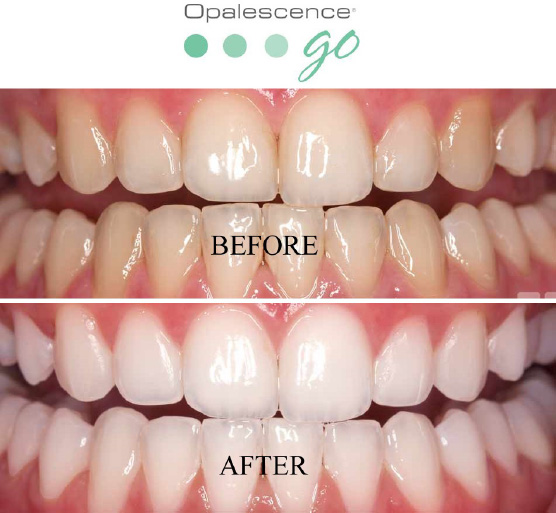In today’s article, we will be discussing the importance of flossing correctly. Flossing is a crucial step in maintaining good oral hygiene, as it helps to remove plaque and food particles from hard-to-reach areas that brushing alone cannot reach. By using the proper flossing technique, you can prevent gum disease, cavities, and other oral health issues. Make sure to use the right type of dental floss for your preferences, avoid common flossing mistakes, and incorporate flossing into your daily routine for a brighter and healthier smile. Remember, a little bit of flossing can go a long way in keeping your teeth and gums in top shape! Flossing is an essential part of maintaining good oral hygiene, but are you flossing correctly? Let’s dive into the importance of flossing correctly and how it can benefit your oral health.
Why Flossing Correctly Matters
Flossing correctly is crucial for removing plaque and food particles from between your teeth and under the gumline. These are areas that your toothbrush alone cannot reach. By flossing correctly, you can prevent gum disease, cavities, and keep your mouth healthy overall.
Flossing isn’t just about removing food particles; it’s also about removing plaque buildup. Plaque is a sticky film of bacteria that can lead to tooth decay and gum disease if left unchecked. Proper flossing helps remove this plaque from hard-to-reach areas in your mouth.
The Proper Flossing Technique
To floss correctly, you’ll need about 18 inches of dental floss. Wind most of it around your middle fingers and hold it tightly between your thumbs and forefingers. Gently slide the floss between your teeth using a back-and-forth motion, curving it into a C-shape against each tooth. Make sure to also move it up and down to cover all surfaces.
Flossing should be done at least once a day, preferably before bedtime. Proper flossing technique helps remove plaque and food particles from areas that brushing alone cannot reach. It’s an essential step in maintaining good oral hygiene.
Benefits of Flossing Correctly
The benefits of flossing correctly are numerous. By removing plaque and food particles from between your teeth and under the gumline, you can prevent gum disease, cavities, and bad breath. Flossing also helps improve gum health by reducing inflammation and bleeding.
When you floss correctly, you are promoting overall oral health and preventing potential dental issues down the road. Regular flossing can save you from costly and painful dental procedures like fillings, root canals, and gum treatments.

Types of Dental Floss
There are various types of dental floss available to suit different preferences and needs. Some common types include:
Waxed Floss
Waxed floss is coated with a thin layer of wax, making it easier to slide between teeth, especially if your teeth are close together. The wax also helps the floss glide more smoothly and prevent it from fraying or shredding.
Choosing waxed floss can make flossing more comfortable and effective, especially if you have tight spaces between your teeth. It’s a good option for those who are new to flossing or have sensitive gums.
Unwaxed Floss
Unwaxed floss does not have a coating of wax, making it thinner and more flexible than waxed floss. While it may not glide as smoothly between teeth as waxed floss, unwaxed floss can be more effective in removing plaque and debris from hard-to-reach areas.
If you prefer a thinner floss or have gaps between your teeth, unwaxed floss may be a better choice for you. It is also a good option for those who are experienced flossers and want more control over the flossing process.
Dental Tape
Dental tape is wider and flatter than traditional floss, making it ideal for those with larger gaps between their teeth. It is designed to cover more surface area and remove plaque effectively from wider spaces.
If you have wider spaces between your teeth or braces, dental tape may be a more suitable option for you. It can provide a thorough cleaning and help maintain good oral hygiene in hard-to-reach areas.

Common Flossing Mistakes to Avoid
While flossing is a simple and effective way to keep your teeth and gums healthy, there are some common mistakes to avoid to ensure you are flossing correctly.
Snapping the Floss
One common mistake people make is snapping the floss into their gums, which can cause bleeding and damage to the gum tissue. Instead of forcefully snapping the floss, gently guide it between your teeth using a back-and-forth motion to avoid injuring your gums.
Using the Same Section of Floss
Another mistake is using the same section of floss for multiple teeth, which can spread bacteria and plaque. Make sure to use a clean section of floss for each tooth and discard used floss to prevent reintroducing bacteria into your mouth.
Rushing Through Flossing
Many people rush through the flossing process, missing areas and not thoroughly cleaning between their teeth. Take your time to floss each tooth properly, ensuring you cover all surfaces and remove plaque and debris effectively.
Flossing Too Hard
Flossing too aggressively can damage your gums and cause discomfort. Use a gentle back-and-forth motion to guide the floss between your teeth without applying excessive pressure. This will help prevent gum irritation and bleeding.
Skipping Flossing Altogether
One of the biggest mistakes you can make is skipping flossing altogether. Brushing alone cannot reach all areas of your mouth, especially between teeth and under the gumline. Flossing is an essential step in maintaining good oral hygiene and preventing dental issues.

Tips for Effective Flossing
To ensure you are flossing correctly and effectively, here are some tips to keep in mind:
- Use about 18 inches of floss to have enough to work with and avoid reusing the same section.
- Wind the floss around your middle fingers to have a good grip and control during flossing.
- Hold the floss tightly between your thumbs and forefingers to guide it between your teeth.
- Gently slide the floss between your teeth using a back-and-forth motion to avoid snapping it.
- Curve the floss into a C-shape against each tooth and move it up and down to cover all surfaces.
- Floss at least once a day, preferably before bedtime, to remove plaque and food particles.
- Be patient and take your time to floss each tooth properly without rushing through the process.
By following these tips and techniques, you can ensure you are flossing correctly and effectively to maintain good oral hygiene and prevent dental issues.

Conclusion
Flossing correctly is an essential part of maintaining good oral hygiene and promoting overall dental health. By removing plaque and food particles from between your teeth and under the gumline, you can prevent gum disease, cavities, and bad breath.
Make sure to floss at least once a day using the proper technique and type of dental floss that suits your preferences. Avoid common flossing mistakes like snapping the floss or using the same section for multiple teeth to ensure effective cleaning.
Remember, flossing is not just about removing food particles; it’s about preventing dental issues and keeping your smile healthy. So, take the time to floss correctly and reap the benefits of a clean and healthy mouth.



